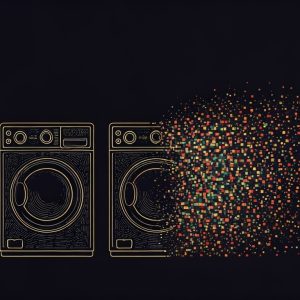With the launch of its acTiVe advanced digital television technology range at this week’s Cable and Satellite Show in London, Acorn hopes to prove it still has a role to play after the flotation of its ARM associate (CI No 3,392), the lukewarm reception for network computers and the shrinking market for its school computers. The Cambridge, UK-based company is working hard to redefine itself as an innovative designer of software and hardware for digital interactive services. Now that it is no longer collaborating with Oracle’s NCI subsidiary to develop network computers, it hopes to use the expertise it gained from the partnership in designing consumer products. Three major market segments in particular are being targeted: dedicated single-function terminals aimed at a specific application such as home banking or retail stock ordering; smart TV set-top devices for accessing the internet via analog TVs; and smart phones with text screens for the delivery of email and other text services such as directory enquiries. Acorn’s target audience is consumer electronic companies planning products for the mass market, delivered via interactive broadcasting and broadband services. To achieve its objective, it is devoting an increased share of its diminishing revenues to research and development. During the year to 31 December 1997, R&D expenditure rose by 2.4m pounds to 3.6m pounds, or 14% of revenues, up from with 3.8% in 1996. In 1997, consultancy and licensing revenues accounted for 36% of revenues compared with 10% in 1996, with products accounting for the remainder. Sales outside the UK grew from 24% of revenues to 41%. Although revenues fell from 30m pounds in 1996 to 25.2m pounds, pre-tax losses dropped from 6.3m to 2.9m pounds. Acorn’s chairman Gordon Owen says the R&D expenditure is being invested in markets and technologies which have the potential for revenue growth and profit in 1999 and beyond. So far, the increased spending has been funded through the proceeds of the ARM flotation as well as licensing revenues. Acorn also plans to use the ARM money to repay borrowings and finance future growth. It received 14.9m pounds, net of expenses, plus a dividend of 1.5m pounds, after reducing its stake in ARM to 24% from 43%. ARM floated on NASDAQ and the London Stock Exchange in April 1998, valued at 264m pounds. Acorn’s recent development partners include NTT of Japan with whom it developed a prototype videophone, Oracle and Silicon Graphics with whom it developed video-on-demand products, and Samsung for whom it developed an interactive TV device. It has also been involved in broadband digital TV trials in the US, Europe and Asia. Despite the growth in consultancy and licensing fees, the loss of income from hardware sales and the ending of the Oracle contract will cause a significant reduction in revenues and increased loss for the first half of 1998, Mr Owen says. However, he expects the situation to improve in the second half, helped by the launch of Acorn’s new RISC PC. The acTiVe range is based on ARM’s StrongARM 1500 multimedia chip. Now that it has reduced its holding in ARM, Acorn has to license the chip like anyone else. However, since Acorn actually helped to design the chip, it has a head start over other companies also designing for the same chip, points out Andy Mee, Acorn’s vice president of marketing and business development. The high capacity StrongARM microprocessor is capable of performing advanced digital television functions such as decoding two MPEG streams. The technology can be used for interactive set-top boxes receiving satellite, cable and terrestrial TV signals. It can also be used with European DVB (Digital Video Broadcasting) and American ATSC (Advanced Television Standards Committee) standards. Signals can be delivered via ADSL (asymmetric digital subscriber line), ATM or Ethernet. The acTiVe software developed by Acorn provides graphical user interfaces with picture-in-picture, electronic program guides and interactive services such as web surfing, email, home shopping and online gaming. We’ll never design the cheapest box, says Mr Mee, but our products will deliver the best interactive services. The users of interactive services will be very different people from today’s PC users, he predicts. They will be used to pressing a button on a remote control handset and seeing something happen. They will expect the same speed of reaction from home shopping and we can help deliver that quality of service. Other software products under development include graphics libraries, a software modem, and an OS kernel and browser which optimize the performance of digital interactive TV chipsets. Acorn now needs to sell the acTiVE design to the consumer electronics industry. Boxes based on our technology will not be the cheapest on the market, but they will be the fastest and capable of many interactive services, says Mr Mee. Once installed, the boxes will be updated remotely, drawing on Acorn’s ideas for the network computer and its experiences in developing networked devices. The crucial question is whether the commercial rollout of consumer services will happen before Acorn’s shareholders lose patience. Share prices have been falling steadily from the 205.5 pence they reached just before the flotation of ARM to 134.5 pence on 15 May.






